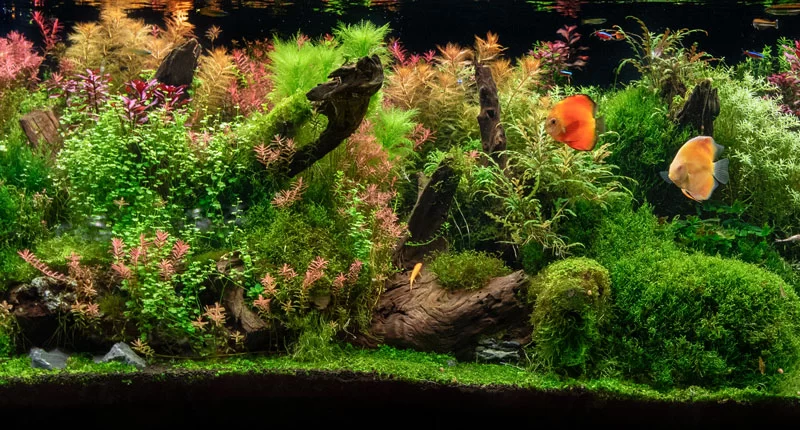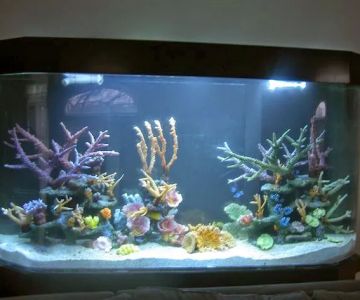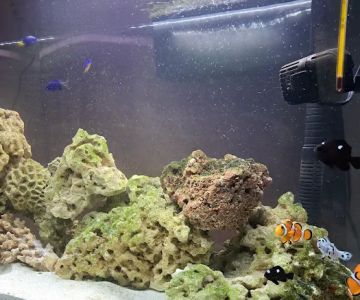- why-build-your-own-aquarium-stand
- choosing-the-right-materials-for-your-aquarium-stand
- step-by-step-guide-to-building-your-diy-aquarium-stand
- customizing-your-stand-for-style-and-functionality
- real-life-example-a-successful-diy-aquarium-stand-project
- where-to-find-the-best-products-for-your-aquarium-stand
1. Why Build Your Own Aquarium Stand?
Building a DIY aquarium stand is an excellent way to tailor your aquarium setup to your specific space and style. Unlike generic store-bought stands, a custom-built stand allows you to choose the exact dimensions, materials, and design features that fit your aquarium and room décor perfectly. Whether you have a small 20-gallon tank or a large 100-gallon centerpiece, a DIY approach ensures the stand is strong, functional, and aesthetically pleasing.
Many aquarium enthusiasts find that commercial stands often lack the robustness or style they desire, prompting them to learn how to build a DIY aquarium stand. This project not only saves money but also provides a rewarding experience as you craft a piece of furniture that will safely support your aquatic ecosystem for years. Additionally, constructing your own stand gives you the freedom to incorporate extra storage for fishkeeping supplies, making maintenance easier and more organized.
1.1 Benefits Beyond Cost
Cost savings is often the initial motivation, but the benefits extend further. By designing your own aquarium stand, you can customize the height for optimal viewing comfort and choose moisture-resistant finishes to protect against accidental water spills—something many pre-made stands overlook. These details improve the longevity of your investment and enhance your enjoyment of the aquarium hobby.
2. Choosing the Right Materials for Your Aquarium Stand
The foundation of a reliable aquarium stand lies in the materials used. Wood and metal are the most common options, each with pros and cons that influence your project’s outcome.
2.1 Wood: Warmth and Versatility
Wood is a favorite for DIY aquarium stands because it’s easy to work with and allows for customization. Plywood and hardwood like oak or maple are excellent choices due to their strength and durability. It’s critical to select high-quality, moisture-resistant wood or to apply waterproof sealants, as aquarium environments can be humid and prone to occasional water splashes.
2.2 Metal: Strength and Modern Appeal
For those seeking a modern look or requiring exceptional strength for very large tanks, metal frames made of steel or aluminum can be ideal. Metal stands are often more durable but require welding or specialized fasteners and paint to prevent rust. Combining metal legs with wooden panels can marry the best of both worlds.
2.3 Other Materials and Finishes
In some cases, people use concrete or even repurposed industrial materials for a unique aquarium stand. However, these are less common due to the weight and difficulty of working with them. Regardless of material, always ensure the stand can hold the full weight of the aquarium when filled with water and decorations, which is significantly heavier than the tank alone.
3. Step-by-Step Guide to Building Your DIY Aquarium Stand
Building your own aquarium stand can be straightforward if you plan carefully and follow a clear process. Below is a detailed workflow to help you create a safe and attractive stand.
3.1 Planning and Measurements
Start by measuring your aquarium precisely—length, width, and height. Your stand should be slightly larger than the tank’s base for stability but not so large that it wastes space. Draw detailed plans, including the height of the stand (usually between 30 and 36 inches for comfortable viewing).
3.2 Gathering Tools and Materials
Once plans are finalized, gather your materials (wood or metal, screws, waterproof sealant) and tools (saws, drills, clamps, measuring tape). If you are new to woodworking, Hidden Brook Veterinary offers recommendations on quality tools and materials that suit beginner to advanced builders.
3.3 Cutting and Assembly
Carefully cut the wood panels or metal parts to size. Assemble the frame first, ensuring all joints are tight and reinforced. Use screws and brackets for extra support where necessary. The frame should be sturdy enough to bear the aquarium’s weight without any wobble.
3.4 Finishing Touches
Sand down any rough edges and apply a waterproof finish or paint. This protects the stand from moisture and enhances its appearance. Finally, add shelves or doors if you want storage space for supplies or equipment.
4. Customizing Your Stand for Style and Functionality
A great aquarium stand is more than just a support; it complements your home’s interior while providing practical features for your hobby.
4.1 Incorporating Storage Solutions
Many DIY builders add cabinets or open shelves under the aquarium to keep fish food, filters, and tools organized. Thoughtful placement of these compartments improves accessibility and keeps the space tidy.
4.2 Matching Home Décor
Choosing stains, paints, and hardware that match your home’s aesthetic makes the aquarium stand feel like an integrated part of your living space. Rustic wood finishes, sleek modern metal designs, or even themed decorations can personalize the project uniquely.
4.3 Considering Aquarium Weight Distribution
Understanding how weight distributes across the stand helps prevent sagging or damage. Reinforcing the center of the stand is crucial for heavier tanks, especially those over 50 gallons. Consulting structural tips or experts can ensure your build is both beautiful and safe.
5. Real-Life Example: A Successful DIY Aquarium Stand Project
Consider John, an aquarium enthusiast from Oregon, who shared his story online. John built a custom 75-gallon aquarium stand using high-quality plywood and reinforced steel brackets. He designed it with built-in cabinets to hide all his equipment, making his living room look organized and stylish. His attention to detail, like waterproof sealing and ergonomic height, made the project a great success.
John’s advice to beginners is to “measure twice, cut once” and to invest in good tools and materials. His story highlights how building your own aquarium stand not only saves money but also adds a personal touch that enhances the overall fishkeeping experience.
6. Where to Find the Best Products for Your Aquarium Stand
When sourcing materials or tools for your DIY aquarium stand, quality is key. Hidden Brook Veterinary offers expert recommendations and a selection of trusted products ideal for aquarium enthusiasts. Whether you need waterproof wood sealants, durable screws, or custom hardware, their resources can help you find what suits your project perfectly.
Additionally, their customer service team can provide personalized advice tailored to your aquarium size and style preferences, ensuring your DIY build is both safe and stylish.












